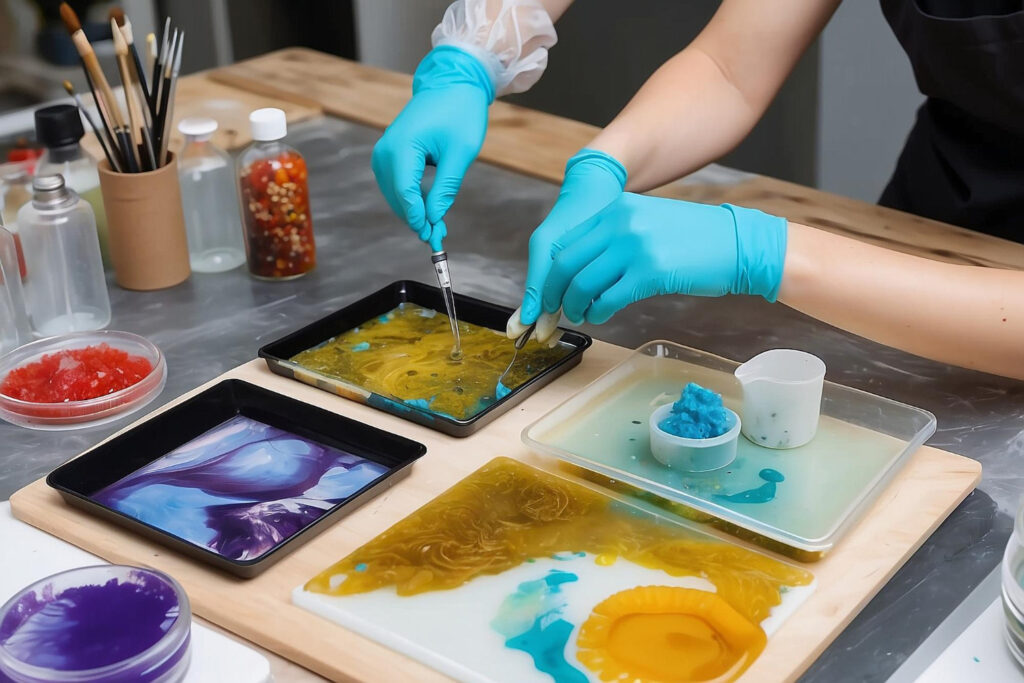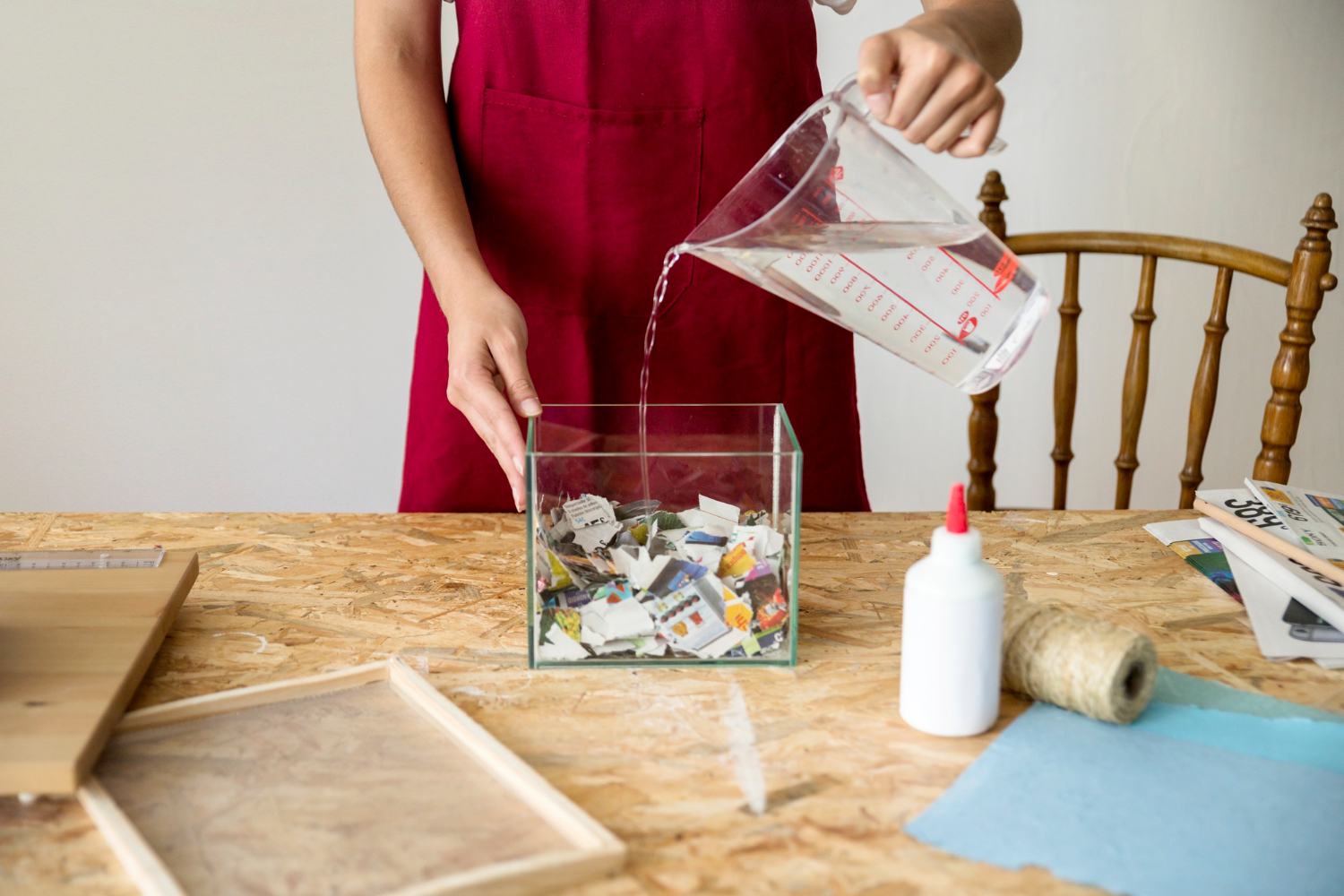Resin printing has revolutionized the world of 3D printing, offering unparalleled detail and smooth finishes. However, cleaning these prints is crucial for maintaining their integrity and ensuring that your final product looks as good as it should.
One question that often comes up in the 3D printing community is whether hydrogen peroxide can be used to clean resin prints. This blog aims to provide a detailed answer, exploring the benefits, drawbacks, and best practices for using hydrogen peroxide in this context.
In recent years, resin 3D printing has gained immense popularity among hobbyists and professionals alike. Known for its precision and high-quality finishes, resin printing is the go-to choice for intricate designs and detailed models. However, one of the critical steps in achieving that perfect finish is the cleaning process.
Cleaning resin prints ensures durability, maintains aesthetic appeal, and prepares the model for any post-processing work. While there are various cleaning agents available, hydrogen peroxide often comes up as a potential solution. In this blog, we will discuss whether hydrogen peroxide is suitable for cleaning resin prints and how to use it effectively.
Table of Contents
ToggleWhat is Hydrogen Peroxide?
Before diving into its application in resin printing, it’s essential to understand what hydrogen peroxide is. Chemically represented as H2O2, hydrogen peroxide is a pale blue liquid in its pure form, which appears colorless when diluted. It is widely used for its strong oxidizing properties and is commonly found in households as a disinfectant or bleaching agent.
Common Uses of Hydrogen Peroxide
Hydrogen peroxide is a versatile compound used in various applications. It is frequently used for disinfecting wounds, bleaching hair, and even in some oral hygiene products. In industrial settings, it serves as a bleaching agent for paper and textiles and is used in environmental cleaning applications.
Safety Considerations
While hydrogen peroxide is effective in many applications, it’s crucial to handle it with care. Concentrated hydrogen peroxide can cause skin burns and eye irritation. Always use protective gloves and eyewear when handling the substance, and store it in a cool, dark place away from direct sunlight.
Can I Use Hydrogen Peroxide to Clean Resin Prints?

The short answer is yes, but with some caveats. Hydrogen peroxide can be used to clean resin prints, but it’s essential to understand how it interacts with the resin material.
Interaction with Resin
Hydrogen peroxide is an oxidizing agent, meaning it can break down organic materials effectively. This property can be beneficial for removing organic residues and contaminants from resin prints.
However, it’s essential to note that not all resins react the same way to hydrogen peroxide. Some resins may experience discoloration or weakening when exposed to the compound for extended periods.
Benefits and Drawbacks
Using hydrogen peroxide for cleaning resin prints offers several benefits. It’s a non-toxic and environmentally friendly option that breaks down into water and oxygen, leaving no harmful residues.
Additionally, its antimicrobial properties can help sanitize the print, making it a suitable choice for items that require a sterile environment.
On the flip side, hydrogen peroxide may cause surface damage or discoloration in some resin types. It’s also less effective against certain types of residues compared to other cleaning agents like isopropyl alcohol (IPA).
Benefits of Using Hydrogen Peroxide for Cleaning Resin Prints

Non-Toxic and Environmentally Friendly
One of the primary advantages of using hydrogen peroxide is its non-toxic nature. Unlike some chemical cleaners, hydrogen peroxide breaks down into water and oxygen, making it an eco-friendly choice.
This property ensures that no harmful chemicals are left behind on your resin prints, making it safe for both you and the environment.
Effective Against Organic Residues
Hydrogen peroxide’s oxidizing properties make it highly effective at breaking down organic materials.
This feature is particularly useful for removing organic contaminants and residues that may be present on your resin prints. By breaking down these residues, hydrogen peroxide helps maintain the print’s overall aesthetic and structural integrity.
Antimicrobial Properties
Another significant benefit is hydrogen peroxide’s antimicrobial properties. It can effectively kill bacteria and microbes on the resin surface, making it an excellent choice for prints that require a higher level of cleanliness. This property is particularly valuable for medical or dental applications where sterility is crucial.
Potential Drawbacks of Using Hydrogen Peroxide on Resin Prints
Chemical Reactions with Resin
Although hydrogen peroxide is generally safe for many applications, it can react adversely with certain resin materials. These chemical reactions may result in discoloration, surface pitting, or even structural weakening of the resin print. It’s essential to conduct a small patch test before applying hydrogen peroxide to the entire print.
Surface Damage
Prolonged exposure to hydrogen peroxide can cause surface damage to some resins. This damage may manifest as discoloration, which can affect the print’s visual appeal. In extreme cases, the structural integrity of the resin may be compromised, leading to brittleness or cracking.
Limited Effectiveness on Certain Residues
While hydrogen peroxide is effective against organic materials, it may not work as well on other types of contaminants. For example, it may struggle to remove stubborn grease or oil residues. In such cases, other cleaning agents like isopropyl alcohol or specialized resin cleaners may be more effective.
How to Safely Use Hydrogen Peroxide to Clean Resin Prints

Materials Needed
- Hydrogen peroxide (3% solution)
- Soft brush or sponge
- Clean water for rinsing
- Protective gloves
- Eye protection
Step-by-Step Cleaning Guide
Preparation
Start by putting on your protective gloves and eye protection to ensure safety. Place the resin print on a clean, stable surface to prevent any accidents during the cleaning process.
Application
Pour a small amount of hydrogen peroxide onto the resin print. Using a soft brush or sponge, gently scrub the surface to remove any contaminants. Be thorough but gentle to avoid causing any damage to the print.
Rinsing
After scrubbing, thoroughly rinse the print with clean water to remove any remaining hydrogen peroxide. This step is crucial to ensure that no residue is left behind, which could cause surface damage over time.
Drying
Allow the resin print to air dry completely before handling or further processing. This step ensures that the print is free from any moisture, which could affect its structural integrity.
Alternative Cleaning Methods for Resin Prints

Isopropyl Alcohol (IPA)
Isopropyl alcohol is a popular choice for cleaning resin prints due to its effectiveness in removing uncured resin. However, it’s essential to note that IPA can weaken the mechanical properties of some resins over time. To use IPA, simply submerge the print in a container of IPA and agitate it gently. After a few minutes, remove the print and rinse it with clean water.
Ethanol
Ethanol is another effective cleaning agent for resin prints, similar to IPA. It offers the added benefit of being less harsh on the resin material, making it a suitable alternative for more delicate prints. To use ethanol, follow the same procedure as for IPA, ensuring that the print is thoroughly rinsed and dried afterward.
Specialized Resin Cleaning Solutions
Several specialized cleaning solutions are designed specifically for resin prints. These products offer a balanced approach, effectively removing contaminants without compromising the resin’s structural integrity. While they may be more expensive than household cleaning agents, they provide peace of mind and superior results.
Conclusion
In summary, hydrogen peroxide is a viable option for cleaning resin prints, offering several benefits such as non-toxicity, effectiveness against organic residues, and antimicrobial properties. However, it’s essential to be aware of potential drawbacks like chemical reactions and surface damage. By following the outlined steps and considering alternative cleaning methods, you can maintain the quality and longevity of your resin prints.
Feel free to share your experiences in the comments below or check out our recommended cleaning products for more tips on maintaining your 3D prints. Don’t forget to subscribe to our newsletter for more insights and tutorials on 3D printing!
By integrating these practices into your cleaning routine, you’ll ensure that your resin prints remain in top condition, ready for display or further processing. Happy printing!
FAQs
Can you clean resin with hydrogen peroxide?
Yes, hydrogen peroxide can be used to clean resin prints. Its oxidizing properties make it effective at removing organic contaminants. However, it’s essential to conduct a patch test to ensure compatibility with your specific resin type.
What is the best thing to clean resin prints with?
The best cleaning agent for resin prints depends on the specific needs and material of the print. Isopropyl alcohol and specialized cleaning solutions are commonly recommended. Hydrogen peroxide is also an option for those looking for a non-toxic, eco-friendly alternative.
Does hydrogen peroxide react with resin?
Hydrogen peroxide can react with certain resin materials, potentially causing discoloration or surface damage. Always perform a patch test before applying it to the entire print.
Can I use hydrogen peroxide to clean my 3D printer?
While hydrogen peroxide can be used to clean certain parts of a 3D printer, it’s essential to avoid using it on electronic components. Ensure that the printer is unplugged and follow the manufacturer’s cleaning guidelines.









